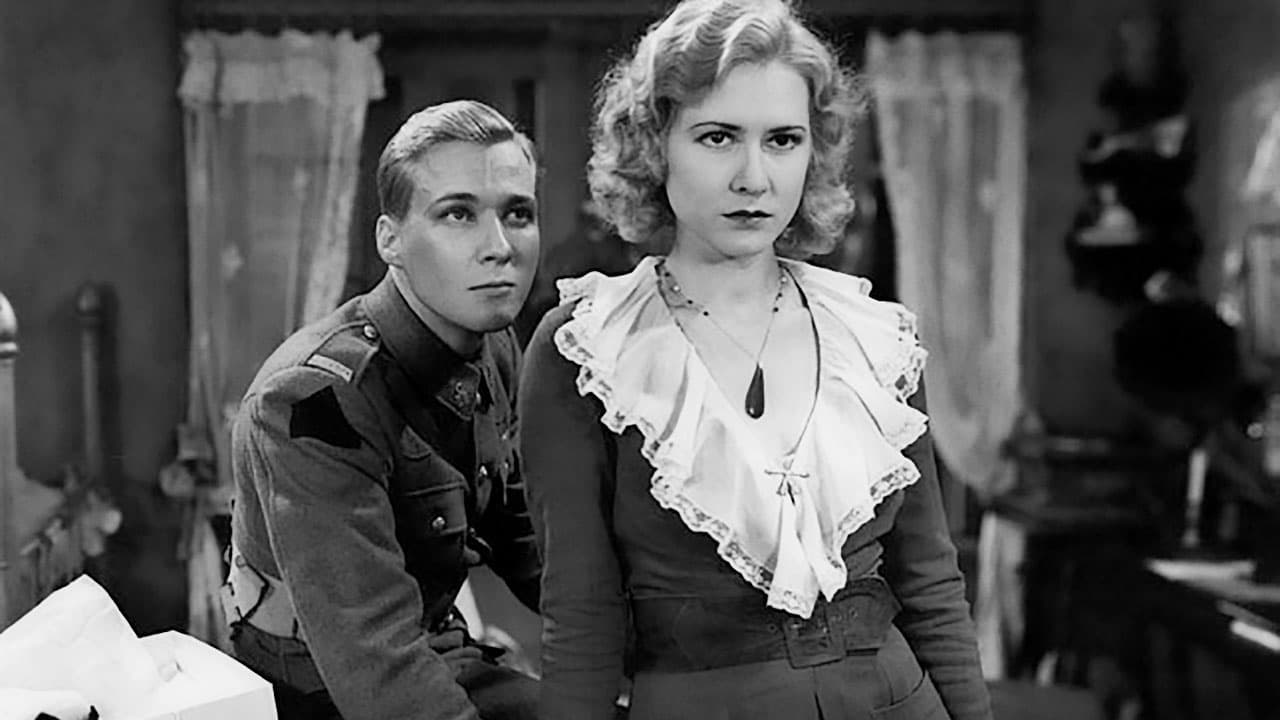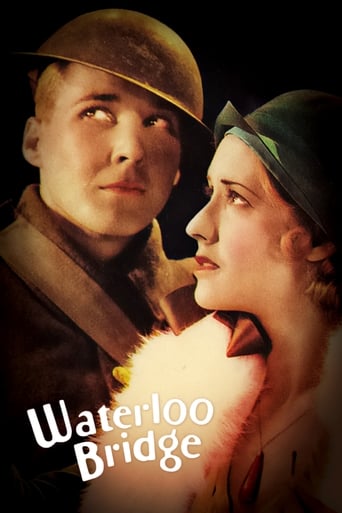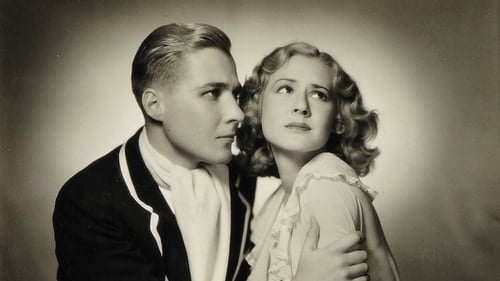




In truth, there is barely enough story here to make a film.
View MoreThis is one of the few movies I've ever seen where the whole audience broke into spontaneous, loud applause a third of the way in.
View MoreWhile it is a pity that the story wasn't told with more visual finesse, this is trivial compared to our real-world problems. It takes a good movie to put that into perspective.
View MoreThis movie tries so hard to be funny, yet it falls flat every time. Just another example of recycled ideas repackaged with women in an attempt to appeal to a certain audience.
View MoreThis original version of the Robert Sherwood play is quite different than the more famous MGM remake starring Vivien Leigh and Robert Taylor. The story is more efficiently told, and without flashbacks, such that this film is nearly half an hour shorter.It was directed by James Whale, and the screenplay was written by Benn Levy and Tom Reed. The most notable aspect of this movie is Mae Clarke's terrific performance as the conflicted streetwalker Myra Deauville; Kent Douglass aka Douglass Montgomery is pedestrian as the soldier from a wealthy family she meets, Roy Cronin, who's unaware of her (oldest) profession.Whereas the later film version of the play has Myra and Roy meet and fall in love before she turns to prostitution, as her only means of support, after she's been led to believe that he's died in the war, in this one they meet after the former chorus girl had already been walking the streets for a couple of years, with friend Kitty (Doris Lloyd). Myra meets Roy on the titled London bridge during an air raid while both help an old woman (Rita Carlisle aka Carlyle) to the safety of a shelter. They then spend some innocent time together in her shabby apartment, interrupted by her landlady Mrs. Hobley (Ethel Griffies), who'd earlier asked for Myra's back rent. Naive Roy sees Myra as an out of work chorus girl who's just down on her luck, but she refuses to take advantage of his innocence, is insulted by his offer to pay her bills, and even throws him out, before they reconcile briefly and he leaves on friendlier terms.Roy is only nineteen, and even though he's no longer under the illusion that the war in France is a fun adventure, he's still worlds away from the weary realist that Myra has become. In their brief time together, Roy fell hopelessly in love with Myra and he pursues her with flowers and a new pink dress she'd mentioned in that prior meeting. Neighbor Kitty emboldens Roy's savior complex, and plants the seed that all Myra needs is a (wedding) ring. Later, Roy tricks Myra into visiting his family's estate in the country, where she reluctantly meets his mother Mary (Enid Bennett), sister Janet (Bette Davis), and father-in-law Major Fred Wetherby (Frederick Kerr). Ruth Handforth plays Augusta, their maid. Roy's family welcomes her with open arms but Myra's guilt about "what she is" causes her to tell Mary that she's not really a chorus girl. The next day, it's clear that Mary hasn't told the others what Myra had shared about her life. Finding herself still accepted among Roy's family is too much for Myra and, still feeling unworthy, she flees back to London by train.Myra is conflicted, she tries but can't seem to go back to doing what she always had. Roy returns to Myra's apartment in London, but finds only Mrs. Hobley, who tells him what he didn't know about the woman with whom he'd fallen in love. But still, he searches for her. Myra successfully avoided Roy until she can't help but try to glimpse him as his regiment meets to leave for the front on Waterloo Bridge. He sees her and makes her promise to marry him when he returns. An air raid begins just as the troop truck has driven away, and Myra is killed by a bomb dropped from a German Zeppelin (in lieu of Leigh's suicide) as the film ends, her monogrammed purse and white fox fur lay on the pavement.
View MoreDuring the early days of talkies, abridged version of classic novels and plays made it to the screen at an alarming rate, from classics like "Jane Eyre", "The Scarlet Letter" and "Oliver Twist" to this, the film version of Robert Sherwood's play. Many of them are dismissed because of their cheap production values (made at poverty row studios) and because of their more elaborate remakes. In the cast of the original "Waterloo Bridge", the original is actually pretty good, and remains an obscure gem because of its director, the artistically brilliant James Whale.Mae Clarke, "the grapefruit girl", is believable as the troubled Myra, the former chorus girl who becomes a prostitute before falling in love with a soldier from a fine family. She certainly not as glamorous as Vivien Leigh who played the role in MGM's much more lavishly produced 1941 remake. The fact that she's less than a picture perfect beauty suits the part well and she comes off successfully in her favor. Douglass Montgomery (billed as Kent Douglas) is a winning handsome hero, while Enid Bennett as his mother, a very young Bette Davis as his supportive sister and Frederick Kerr as his alcoholic uncle offer fine support. Nicely photographed and edited simply to get to the point of the basic structure of the plot, this might not please purists, but for depression era audiences, it must have been a thrill. It certainly still can leave a lump in your throat as the tragic conclusion approaches.
View MoreIn World War I London, Myra Deauville (Mae Clarke) is an American out of work chorus girl making ends meet by picking up men on Waterloo Bridge. During a Zeppelin air raid she meets Roy, a naive young American who enlisted in the Canadian army.Everything about this movie is great, and the rambling old man is awesome. Mae Clarke is hard to define -- she comes off as flippant and confused, which I found to be frustrating. And yet, her character is incredibly confused... so perhaps I ought to give Clarke credit for successfully fleshing out the emotions of her role.James Curtis calls the film an "assured advancement in style" over the previous Whale film, "Journey's End". Further, it has the added bonus of a pre-fame Bette Davis.Mordaunt Hall called the picture "somewhat sketchy in substance, but it is acted cleverly and there is imagination in the employment of the camera and the microphone." Which version Hall saw is unclear -- the film was cut by censors to push the idea of Myra as a chorus girl and not as a prostitute. (The cuts "horrified" James Whale, not surprisingly.) Whale completed the film $50,000 under budget, and Laemmle was so impressed he gave the director the choice of any property the studio had in the planning stages. He selected "Frankenstein" and went on to become one of the leading directors at Universal.
View MoreJames Whale (1889-1957), the once very famous director of most excellent horror pictures such as the original "Frankenstein" (1931), who was later forgotten, after Hollywood forced him, in 1941, to an early retirement due to, amongst other things, non-closeted homosexual liaisons, is recently getting re-detected, having started with the restored edition of Whale's "The Old Dark House" (1932). "Waterloo Bridge" (1931), is his first self-directed feature-long movie. It stands, for all those who know a bit about the difficult life of Whale, closely under the experiences of his early years. The movie has been released for the first time on a film-carrier, having never appeared before on video, due to the self-imposed moral codex of the Hollywood studios and is part of a meritorious series called "Forbidden Hollywood", exclusively never before seen, mostly excellent pictures.Given that "Waterloo Bridge" was made in 1930, compare the acting on the one side with the contemporaneous acting in European movies of the same time - you will find a distance that cannot be bigger, since the over-acting due to the lack of sound which is so characteristic for especially German silent movies, was still sensible for a long time. On the other side, compare the mannerist speaking of the American films noir of the 30ies and 40ies - with both types, "The Waterloo Bridge" has nothing in common. Whale went even so far as to smuggle a few linguistic examples for switching of social codes into the movie - listen carefully the dialogs between the two main actors, the one is a Canadian noble-man turned soldier, the other is a street-walker and former chorus girl. But much more astonishing is not the actual choice of words of different linguistic levels, but the way how extraordinarily open topics are discussed in this movie that would still today be considered improper in many parts of society on both sides of the ocean. Another most interesting sociological feature is that Whale systematically showed the different types of everyday's behavior of a European and a Canadian. The Canadian, very close to the American, is without any reason polite a priori and thus avoiding tough subjects and rather leaves the scene instead of going through to the bloody end. She, the English girl, raises her voice, throws him bucket-wise the stinking truth of her miserable youth in his face - and kind of awakes him in doing so. Compare the scene when Myra admits to her lover's mother that she lives from pick-ups. The mother reacts as if she never had expected such an act of honesty from a girl from her cultural background. What Whale did here is a psycho-gram including not only sociological, but also linguistic behavior.When I was watching this movie, and the movie had nearly reached its end, I said to myself: something is going to happen - otherwise it is not a Whale-movie. And something terrible did happen. Watch this true jewel of highest film work and ask yourself about the function of the bridge.
View More